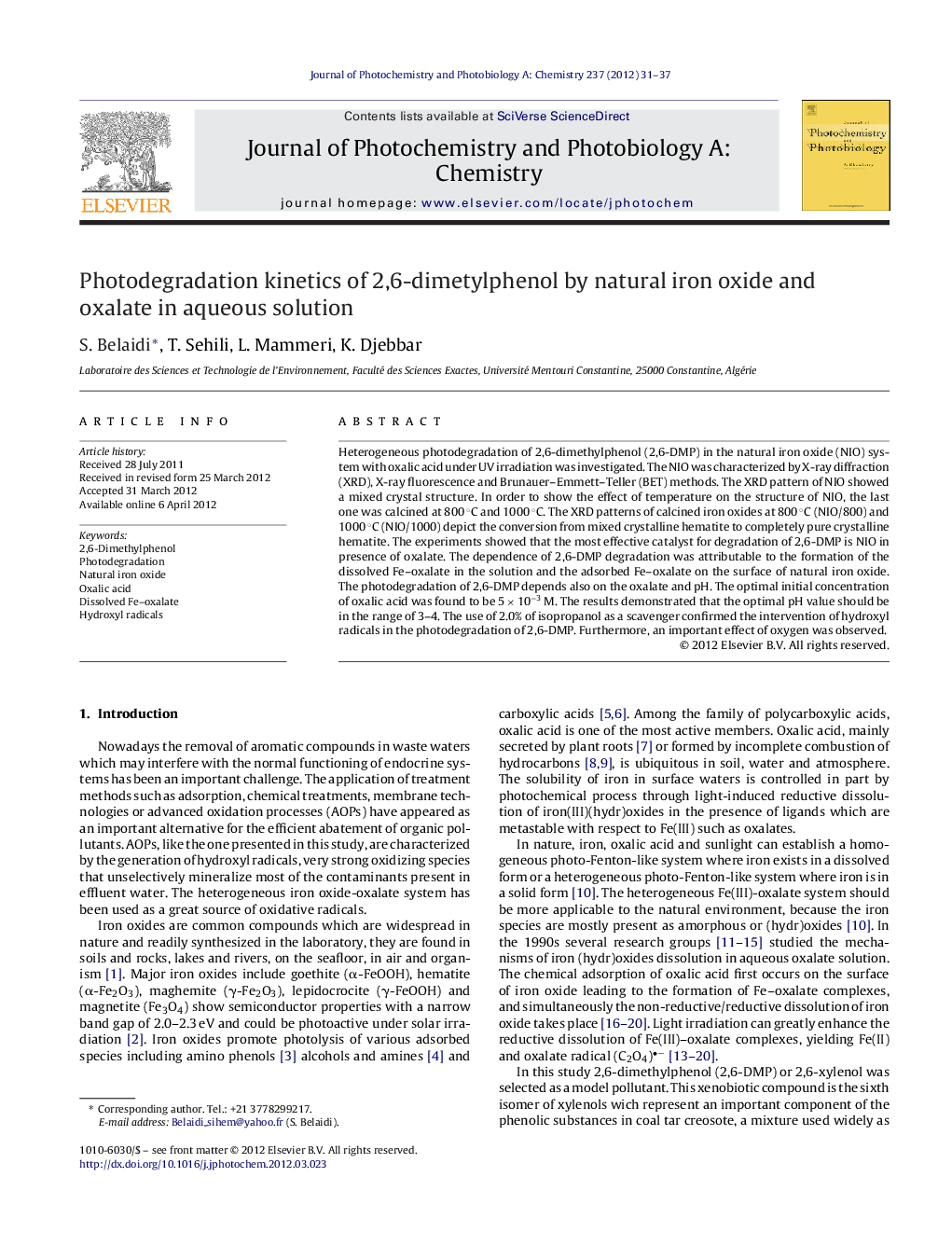| کد مقاله | کد نشریه | سال انتشار | مقاله انگلیسی | نسخه تمام متن |
|---|---|---|---|---|
| 28310 | 44069 | 2012 | 7 صفحه PDF | دانلود رایگان |

Heterogeneous photodegradation of 2,6-dimethylphenol (2,6-DMP) in the natural iron oxide (NIO) system with oxalic acid under UV irradiation was investigated. The NIO was characterized by X-ray diffraction (XRD), X-ray fluorescence and Brunauer–Emmett–Teller (BET) methods. The XRD pattern of NIO showed a mixed crystal structure. In order to show the effect of temperature on the structure of NIO, the last one was calcined at 800 °C and 1000 °C. The XRD patterns of calcined iron oxides at 800 °C (NIO/800) and 1000 °C (NIO/1000) depict the conversion from mixed crystalline hematite to completely pure crystalline hematite. The experiments showed that the most effective catalyst for degradation of 2,6-DMP is NIO in presence of oxalate. The dependence of 2,6-DMP degradation was attributable to the formation of the dissolved Fe–oxalate in the solution and the adsorbed Fe–oxalate on the surface of natural iron oxide. The photodegradation of 2,6-DMP depends also on the oxalate and pH. The optimal initial concentration of oxalic acid was found to be 5 × 10−3 M. The results demonstrated that the optimal pH value should be in the range of 3–4. The use of 2.0% of isopropanol as a scavenger confirmed the intervention of hydroxyl radicals in the photodegradation of 2,6-DMP. Furthermore, an important effect of oxygen was observed.
► The natural iron oxide and oxalate system was used under UV irradiation.
► The process was applied in order to improve the degradation of 2,6-dimethylphenol.
► The optimal initial concentration of oxalic acid was found to be 5 × 10−3 M.
► The optimal pH value should be in the range of 3–4.
► The addition of isopropanol as a scavenger confirmed the intervention of
• OH.
Journal: Journal of Photochemistry and Photobiology A: Chemistry - Volume 237, 1 June 2012, Pages 31–37